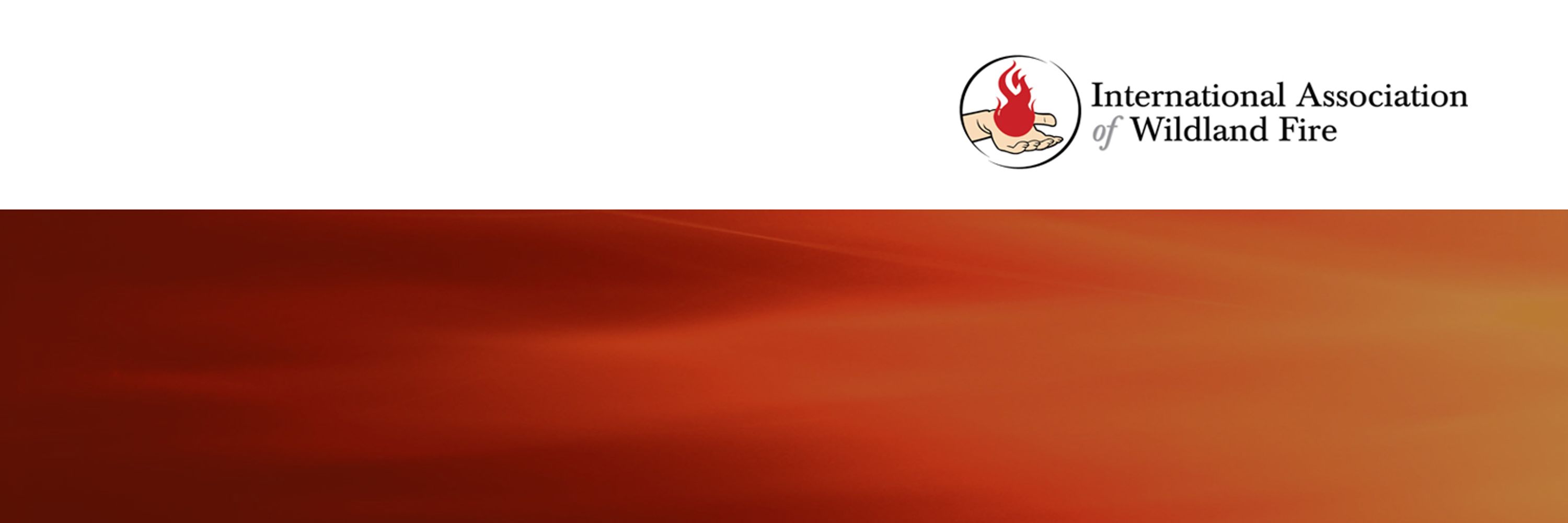
Publishing fundamental & applied fire research, including fire modelling, management, ecological & societal impacts.
https://www.publish.csiro.au/wf
Cliff et al. evaluate a decade of Indigenous-led fire management across 4 Australian desert sites. The shift to cooler-season, smaller burns improved fire heterogeneity and cultural engagement.
🔗 doi.org/10.1071/WF25...
#IJWildlandFire


Cliff et al. evaluate a decade of Indigenous-led fire management across 4 Australian desert sites. The shift to cooler-season, smaller burns improved fire heterogeneity and cultural engagement.
🔗 doi.org/10.1071/WF25...
#IJWildlandFire
Radford et al. introduce a simulation-optimisation framework using neural network metamodels and NSGA-II to create fuel treatment plans that reduce burn probability by up to 284%, this method balances risk reduction and resource use.
🔗 doi.org/10.1071/WF25080
#IJWildlandFire

Radford et al. introduce a simulation-optimisation framework using neural network metamodels and NSGA-II to create fuel treatment plans that reduce burn probability by up to 284%, this method balances risk reduction and resource use.
🔗 doi.org/10.1071/WF25080
#IJWildlandFire
Desservettaz et al. review the complex composition and health risks of bushfire smoke for firefighters, offering evidence-based guidance on exposure reduction, PPE use, and decontamination.
🔗 doi.org/10.1071/WF25138
#IJWildlandFire
Desservettaz et al. review the complex composition and health risks of bushfire smoke for firefighters, offering evidence-based guidance on exposure reduction, PPE use, and decontamination.
🔗 doi.org/10.1071/WF25138
#IJWildlandFire
Browse International Journal of Wildland Fire:
connectsci.au/wf

Browse International Journal of Wildland Fire:
connectsci.au/wf
- better search filtering across article types&subjects
- journal article split screen view
- nuanced email notification options, inc. saved search alerts: connectsci.au/sign-in


- better search filtering across article types&subjects
- journal article split screen view
- nuanced email notification options, inc. saved search alerts: connectsci.au/sign-in
You can now find International Journal of Wildland Fire here:
connectsci.au/wf
So, what's new for readers and authors?

You can now find International Journal of Wildland Fire here:
connectsci.au/wf
So, what's new for readers and authors?
Fan et al. investigate canyon fire dynamics under varied terrains, revealing critical slope thresholds (α ≥ 27.5°, δ ≥ 20°) for eruptive fire. Strong convective heating ahead of the fire front drives rapid spread, challenging strategies.
🔗 doi.org/10.1071/WF24...
#IJWildlandFire

Fan et al. investigate canyon fire dynamics under varied terrains, revealing critical slope thresholds (α ≥ 27.5°, δ ≥ 20°) for eruptive fire. Strong convective heating ahead of the fire front drives rapid spread, challenging strategies.
🔗 doi.org/10.1071/WF24...
#IJWildlandFire
Epstein & Seielstad analyse WFDSS text from 6,630 large US wildfires (2011–2023). Barriers appear in 75%—mainly roads, burn scars and fuel variation. Prior fires more often stopped spread than treatments.
🔗 doi.org/10.1071/WF25051
#IJWildlandFire

Epstein & Seielstad analyse WFDSS text from 6,630 large US wildfires (2011–2023). Barriers appear in 75%—mainly roads, burn scars and fuel variation. Prior fires more often stopped spread than treatments.
🔗 doi.org/10.1071/WF25051
#IJWildlandFire
Fallon et al. present a novel methodology to assess fuel treatment effectiveness in California forests. Using FTEM and FACTS data, they show 61% of treatments modified fire behavior, with fire or removal-based treatments most effective.
🔗 doi.org/10.1071/WF24220
#IJWildlandFire

Fallon et al. present a novel methodology to assess fuel treatment effectiveness in California forests. Using FTEM and FACTS data, they show 61% of treatments modified fire behavior, with fire or removal-based treatments most effective.
🔗 doi.org/10.1071/WF24220
#IJWildlandFire
Yue et al. present a comprehensive wildfire risk framework for Sichuan, China, integrating hazard and vulnerability. Using six statistical connection methods with logistic regression, they identify the Point-IV-LR model as most effective.
🔗 doi.org/10.1071/WF25089
#IJWildlandFire

Yue et al. present a comprehensive wildfire risk framework for Sichuan, China, integrating hazard and vulnerability. Using six statistical connection methods with logistic regression, they identify the Point-IV-LR model as most effective.
🔗 doi.org/10.1071/WF25089
#IJWildlandFire
Gjedrem et al. (2025) examine fire risk perception and garden adaptation in Tasmania’s WUI. Residents often underestimate hazards, but personalised garden hazard reports motivated change despite knowledge, resource, and emotional barriers.
🔗 doi.org/10.1071/WF24213
#IJWildlandFire

Gjedrem et al. (2025) examine fire risk perception and garden adaptation in Tasmania’s WUI. Residents often underestimate hazards, but personalised garden hazard reports motivated change despite knowledge, resource, and emotional barriers.
🔗 doi.org/10.1071/WF24213
#IJWildlandFire
Share research on fire dynamics, risk modelling, resilience & more. If you have any questions, reach out to the team.
📆 Submit by 31 Dec 2025
More Information: www.publish.csiro.au/wf/content/C...
#FireScience

Share research on fire dynamics, risk modelling, resilience & more. If you have any questions, reach out to the team.
📆 Submit by 31 Dec 2025
More Information: www.publish.csiro.au/wf/content/C...
#FireScience
Krix et al. (2025) developed impact models for the Australian Fire Danger Rating System to predict structure loss from wildfires. Using structure density, cleared land, canopy height and terrain ruggedness.
🔗 doi.org/10.1071/WF24148
#IJWildlandFire

Krix et al. (2025) developed impact models for the Australian Fire Danger Rating System to predict structure loss from wildfires. Using structure density, cleared land, canopy height and terrain ruggedness.
🔗 doi.org/10.1071/WF24148
#IJWildlandFire
Wong et al. show that heat yields in wet sclerophyll fuels vary widely by species and season—especially in live understorey fuels. Fixed values in fire models may overestimate fire intensity.
📄 doi.org/10.1071/WF24227
#IJWildlandFire

Wong et al. show that heat yields in wet sclerophyll fuels vary widely by species and season—especially in live understorey fuels. Fixed values in fire models may overestimate fire intensity.
📄 doi.org/10.1071/WF24227
#IJWildlandFire
O’Grady et al. shows how Machine Learning with Landsat can reconstruct fire histories across US military lands. Models achieved >93% accuracy, offering local-scale insights into ignition patterns & fire management for defense landscapes.
🔗 doi.org/10.1071/WF24214
#IJWildlandFire

O’Grady et al. shows how Machine Learning with Landsat can reconstruct fire histories across US military lands. Models achieved >93% accuracy, offering local-scale insights into ignition patterns & fire management for defense landscapes.
🔗 doi.org/10.1071/WF24214
#IJWildlandFire
Fisher et al. study the 2023 “Black Spring” in Australia’s northern spinifex deserts. Indigenous ranger-led burns created breaks that slowed or redirected wildfires, showing the potential of large-scale desert fire management to limit megafires. 🔥🌳
🔗 doi.org/10.1071/WF25002

Fisher et al. study the 2023 “Black Spring” in Australia’s northern spinifex deserts. Indigenous ranger-led burns created breaks that slowed or redirected wildfires, showing the potential of large-scale desert fire management to limit megafires. 🔥🌳
🔗 doi.org/10.1071/WF25002
Farquhar et al. (2025) studied how reptiles and mammals respond to fire in Triodia-mallee woodlands. Some lizards peaked 1 year post-fire, while others like Ningaui yvonneae preferred long-unburnt, mature spinifex habitat. 🔥🦎
🔗 doi.org/10.1071/WF24...
#IJWildlandFire
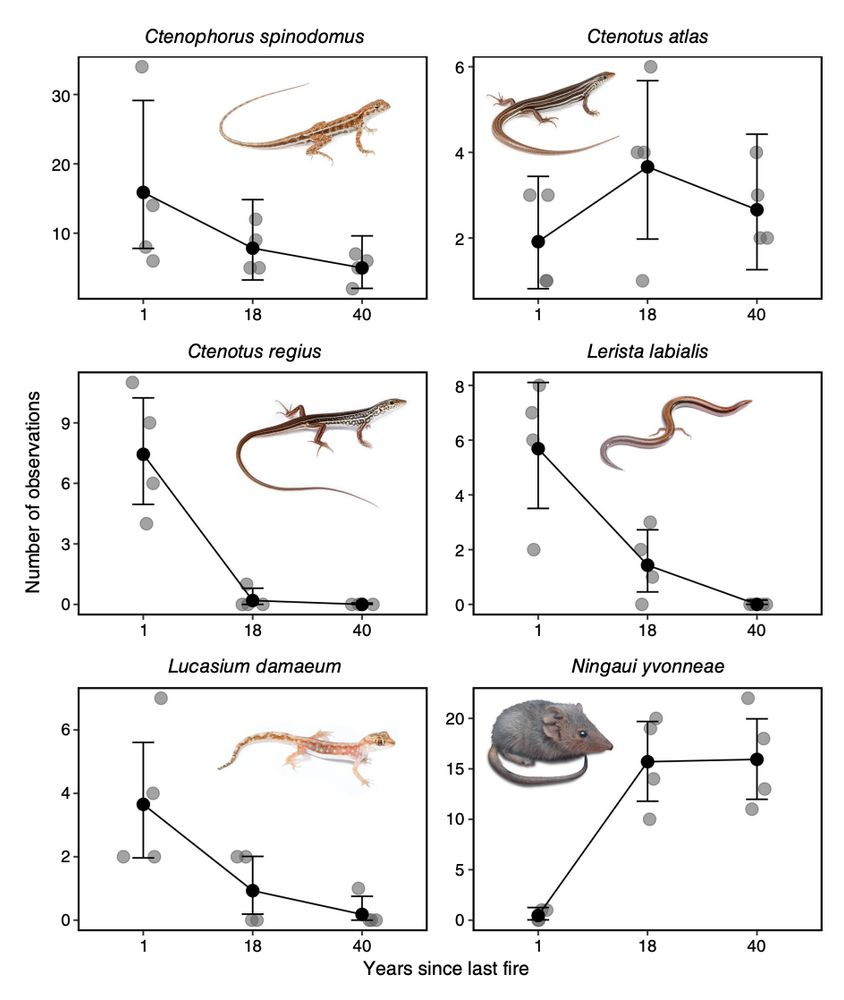
Farquhar et al. (2025) studied how reptiles and mammals respond to fire in Triodia-mallee woodlands. Some lizards peaked 1 year post-fire, while others like Ningaui yvonneae preferred long-unburnt, mature spinifex habitat. 🔥🦎
🔗 doi.org/10.1071/WF24...
#IJWildlandFire
🔥 Quiñones et al. show that vegetation phenology—captured via remote sensing—strongly influences wildfire spread in NW Europe. Fires spread faster during vegetation dormancy, not peak fire weather. 🌿📡
🔗 doi.org/10.1071/WF24...
#IJWildlandFire
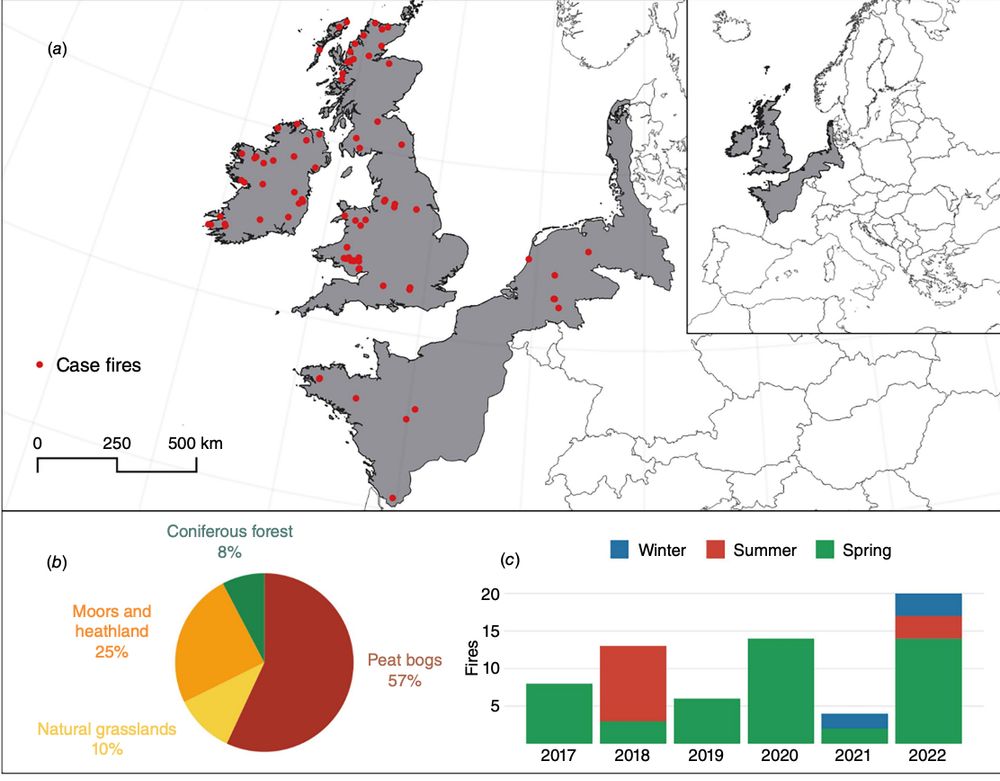
🔥 Quiñones et al. show that vegetation phenology—captured via remote sensing—strongly influences wildfire spread in NW Europe. Fires spread faster during vegetation dormancy, not peak fire weather. 🌿📡
🔗 doi.org/10.1071/WF24...
#IJWildlandFire
Belcher et al. explore seasonal changes in flammability across UK heathlands, showing that live fuel moisture dynamics drive shifts in fire behaviour. Their fuel modelling reveals up to 4× differences in fire spread based on phenology.
👉 doi.org/10.1071/WF24...
#IJWildlandFire
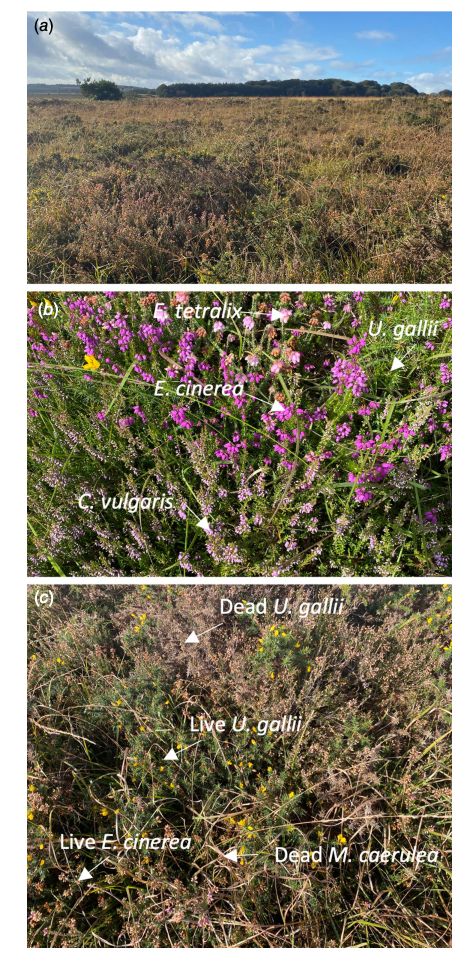
Belcher et al. explore seasonal changes in flammability across UK heathlands, showing that live fuel moisture dynamics drive shifts in fire behaviour. Their fuel modelling reveals up to 4× differences in fire spread based on phenology.
👉 doi.org/10.1071/WF24...
#IJWildlandFire
Qin et al. show deep peat fires smoulder for 10+ days, moving up, down and sideways at ~300 °C under limited oxygen, yet losing <25 % mass and emitting detectable CO at the surface — a clue to locate hidden hotspots.
www.publish.csiro.au/WF/WF22143
#IJWildlandFire
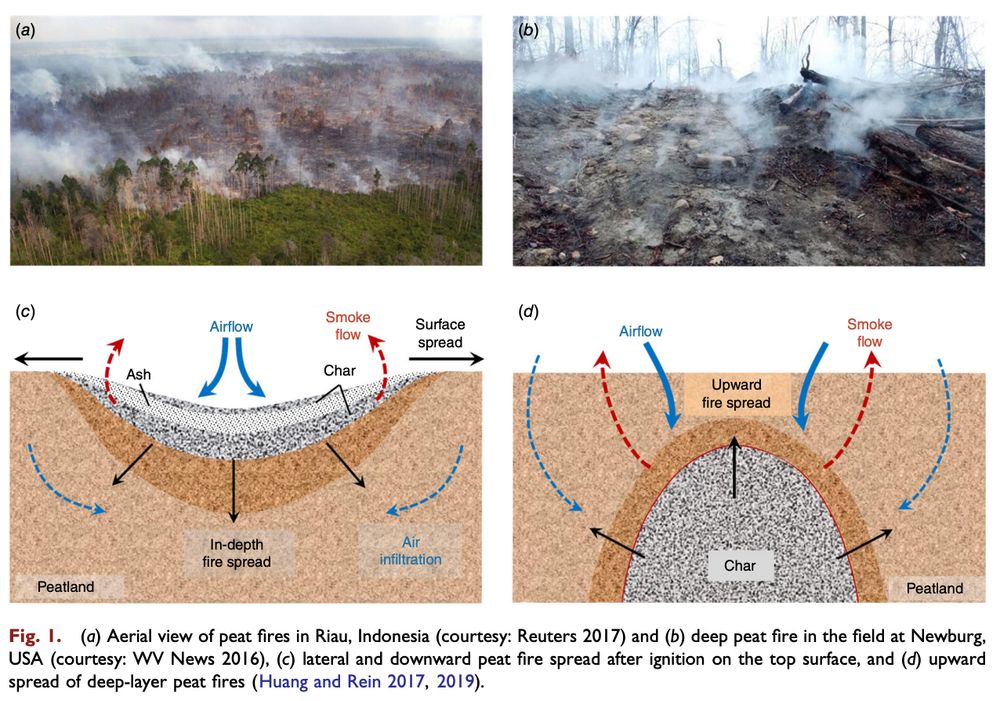
Qin et al. show deep peat fires smoulder for 10+ days, moving up, down and sideways at ~300 °C under limited oxygen, yet losing <25 % mass and emitting detectable CO at the surface — a clue to locate hidden hotspots.
www.publish.csiro.au/WF/WF22143
#IJWildlandFire
Joshi et al. produced Australia’s first nationally consistent wildland fuel type map using satellite-derived vegetation structure. The dataset supports fire behaviour modelling and risk assessment across jurisdictions.
🛰️🔥
📖 doi.org/10.1071/WF24...
#IJWildlandFire

Joshi et al. produced Australia’s first nationally consistent wildland fuel type map using satellite-derived vegetation structure. The dataset supports fire behaviour modelling and risk assessment across jurisdictions.
🛰️🔥
📖 doi.org/10.1071/WF24...
#IJWildlandFire
Keeley’s review clarifies the critical distinctions among fire intensity, fire severity, and burn severity.
This paper argues for consistent terminology, separating energy release, organic matter loss, and ecosystem responses.
📖 Read: doi.org/10.1071/WF07...
#IJWildlandFire
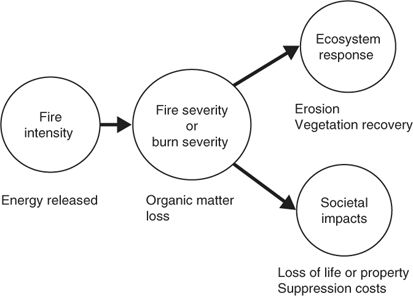
Keeley’s review clarifies the critical distinctions among fire intensity, fire severity, and burn severity.
This paper argues for consistent terminology, separating energy release, organic matter loss, and ecosystem responses.
📖 Read: doi.org/10.1071/WF07...
#IJWildlandFire
How will climate change reshape fuel hazards across landscapes?
McColl-Gausden et al. modelled future fire risks across Victoria, Australia and their findings highlight the urgent need for adaptive fuel management in a warming climate.
📖 Read: doi.org/10.1071/WF24...
#IJWildlandFire
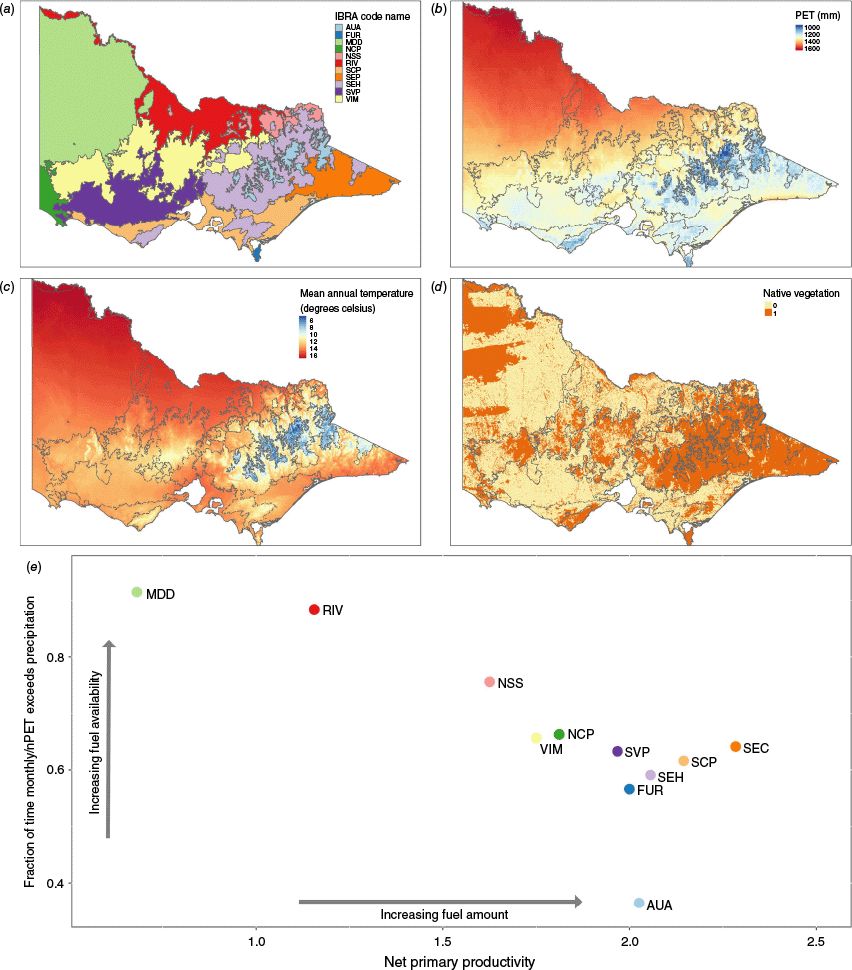
How will climate change reshape fuel hazards across landscapes?
McColl-Gausden et al. modelled future fire risks across Victoria, Australia and their findings highlight the urgent need for adaptive fuel management in a warming climate.
📖 Read: doi.org/10.1071/WF24...
#IJWildlandFire
📄 Read it here: doi.org/10.1071/WF25...
#IJWildlandFire
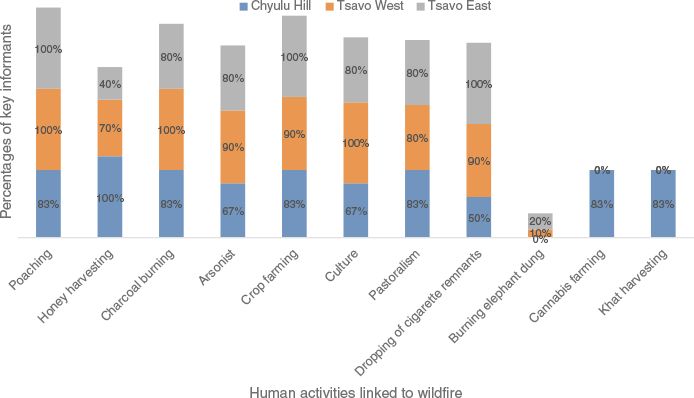
📄 Read it here: doi.org/10.1071/WF25...
#IJWildlandFire
@csiropublishing.bsky.social booth and connect with our team.
📝 Don’t miss our "Everything You Need to Know About Publishing" Workshop this Thursday at 1pm — get insider tips on how to publish your research and navigate the academic publishing process.
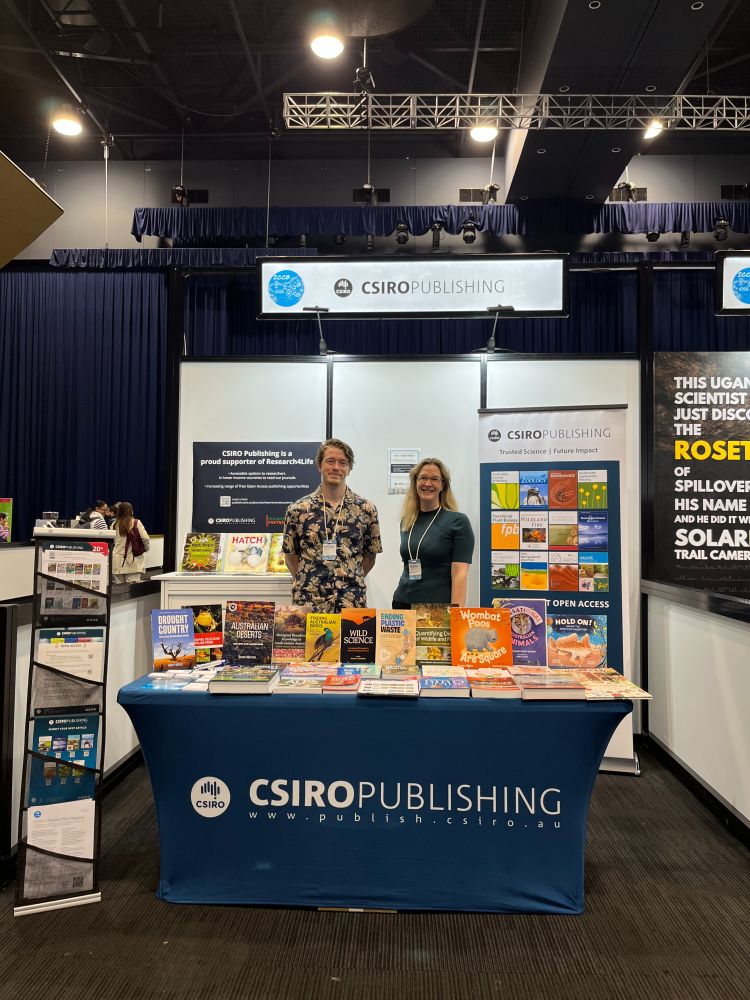
@csiropublishing.bsky.social booth and connect with our team.
📝 Don’t miss our "Everything You Need to Know About Publishing" Workshop this Thursday at 1pm — get insider tips on how to publish your research and navigate the academic publishing process.

